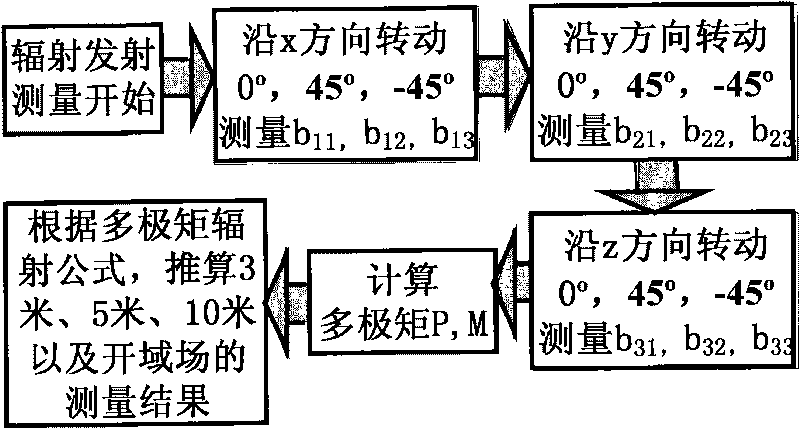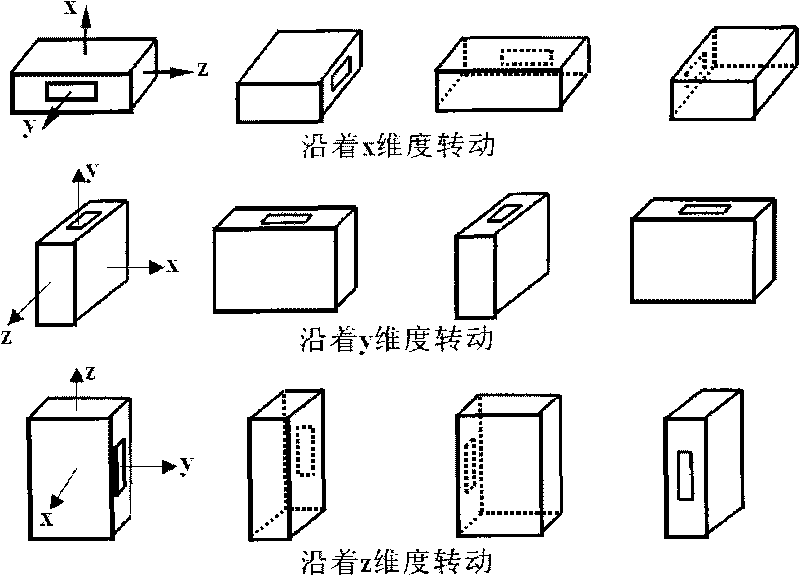Method for testing radiation electromagnetic interference noise by using GTEM chamber
A noise and electric field technology, applied to the application of the GTEM cell, using the GTEM cell to test the field of radiated electromagnetic interference noise, can solve the problems of inability to transform test results, inability to judge near-field testing, and inability to judge the electromagnetic compatibility of the equipment under test.
- Summary
- Abstract
- Description
- Claims
- Application Information
AI Technical Summary
Problems solved by technology
Method used
Image
Examples
Embodiment
[0055] Embodiment: a kind of method utilizing GTEM small room to test radiated electromagnetic interference noise, as attached figure 1 , 2 Shown:
[0056] Step 1: Place the device under test on the turntable of the GTEM chamber, as attached image 3 As shown, turn the turntable to 0, π / 4, -π / 4 angles in turn along the x-dimension, and measure the x-dimension voltage between the core plate and the bottom plate of the GTEM cell containing the radiation electric field information at each angle of the device under test ,:
[0057] Step 2: Place the device under test on the turntable of the GTEM chamber, as attached image 3 As shown, turn the turntable to 0, π / 4, -π / 4 angles in turn along the y-dimension, and measure the y-dimension voltage between the core plate and the bottom plate of the GTEM cell containing the radiation electric field information at each angle of the device under test;
[0058] Step 3: Place the device under test on the turntable of the GTEM chamber, as ...
PUM
 Login to View More
Login to View More Abstract
Description
Claims
Application Information
 Login to View More
Login to View More - R&D
- Intellectual Property
- Life Sciences
- Materials
- Tech Scout
- Unparalleled Data Quality
- Higher Quality Content
- 60% Fewer Hallucinations
Browse by: Latest US Patents, China's latest patents, Technical Efficacy Thesaurus, Application Domain, Technology Topic, Popular Technical Reports.
© 2025 PatSnap. All rights reserved.Legal|Privacy policy|Modern Slavery Act Transparency Statement|Sitemap|About US| Contact US: help@patsnap.com



